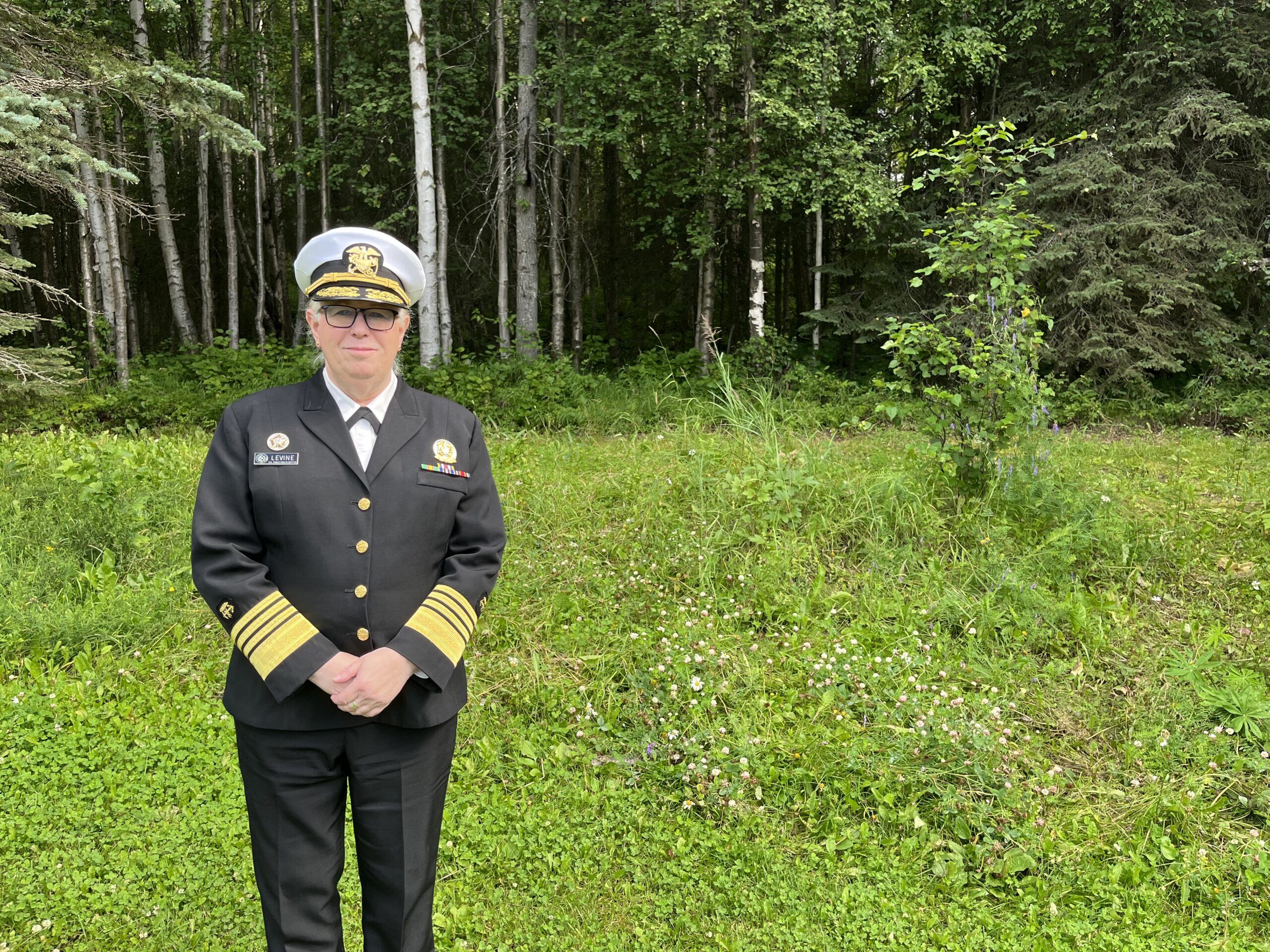
Adm. Rachel Levine, the U.S. assistant secretary for health, traveled across Alaska last week to consult with Tribal Health Organizations and learn more about the unique public health challenges of the state.
Levine has a background in pediatrics and eating disorders. In her position, her office oversees several specialty public health programs like those focused on climate and health equity, long COVID and health issues for minorities. In Alaska, she prioritized learning about climate and health equity, LGBTQI+ health and maternal health. She visited villages and cities throughout the state. In an interview as the trip was wrapping up, she discussed what stuck out from her travels.
Listen:
The following interview has been edited for length and clarity:
Adm. Rachel Levine: I was here to listen and to learn about the public health challenges in Alaska and discuss potential solutions. So, what stood out was trips to rural Alaska, to Nome and to Savoonga, Kotzebue, Utqiaġvik and meeting the people there, meeting the health care personnel there, but also just being in those towns and villages.
Rachel Cassandra: And I know you had meetings with tribal health organizations, what did you learn during the consultation?
RL: We learned about the great work that they are doing both in their towns but also the villages that they serve, but also heard about a lot of the different challenges of doing that. I think that they have made amazing use of telehealth in those areas and are just very innovative and creative. But there are difficulties in providing care for sometimes acutely ill people. I mean, stabilization and then transport throughout the state, challenges in terms of impacts of the weather. Some of the specific issues that we heard about were the impacts of climate change on the way of life in the towns and villages. We saw the impacts of climate change on traditional food sources.
RC: And in Alaska, we’ve seen overdose rates rise with the prevalence of synthetics like fentanyl. Are there solutions that you wish more states would use?
RL: There are no quick fixes here. There’s no magic bullet. I think it is really looking at different prevention strategies, which I know is being done in Alaska. I think the harm reduction strategies are very important. That can include Naloxone. Naloxone reverses opioid overdoses. I think that there are opportunities for more medication for opioid use disorder, such as buprenorphine, there’s still a lot of stigma associated with that–that it’s a crutch. And we don’t view it as a crutch. Medication for opioid use disorder is like we use medicines for other disorders. The medication, again, is not a crutch. It’s not a cure. It’s a treatment. And it can be a very, very powerful treatment.
RC: I’ve heard from leaders in the field that eating disorders in the state have increased over the COVID pandemic, especially for young people. What do you wish Alaskans knew about eating disorders?
RL: Eating disorders, particularly for young people, are treatable. And the vast majority of young people with anorexia, bulimia, etc., they can completely recover and I think that that’s not widely known. I think that people tend to think it’s a lifelong disorder. And it can be, it can become a chronic illness, but the vast majority do not. We have certainly seen an increase in eating disorders throughout the country, during the pandemic, you know, really associated with a lot of the mental health challenges that young people have faced, there are not enough eating disorder treatment programs and professionals available. I think that recognition is really important. So recognizing the signs and symptoms of an eating disorder, because the more entrenched it gets, the longer it goes on, then the harder it is to treat.
RC: Often in the US mental and physical health are considered separate. Obviously, there’s lots of intersections. Can you talk a bit about that?
RL: The integration of physical and mental health I’ve always found very important and interesting. And that’s what drew me to adolescent medicine in the first place. And I think it’s so important now, especially coming out of the pandemic, because the physical and mental health challenges that we’re seeing across the nation in Alaska are all related. Your mind and body are connected. And I think that that’s one of the keys to medical care and public health in the future.
RELATED: As rural communities prepare for climate change, a UAA scientist is trying to connect them with data
Rachel Cassandra covers health and wellness for Alaska Public Media. Reach her atrcassandra@alaskapublic.org. Read more about Rachel here.





